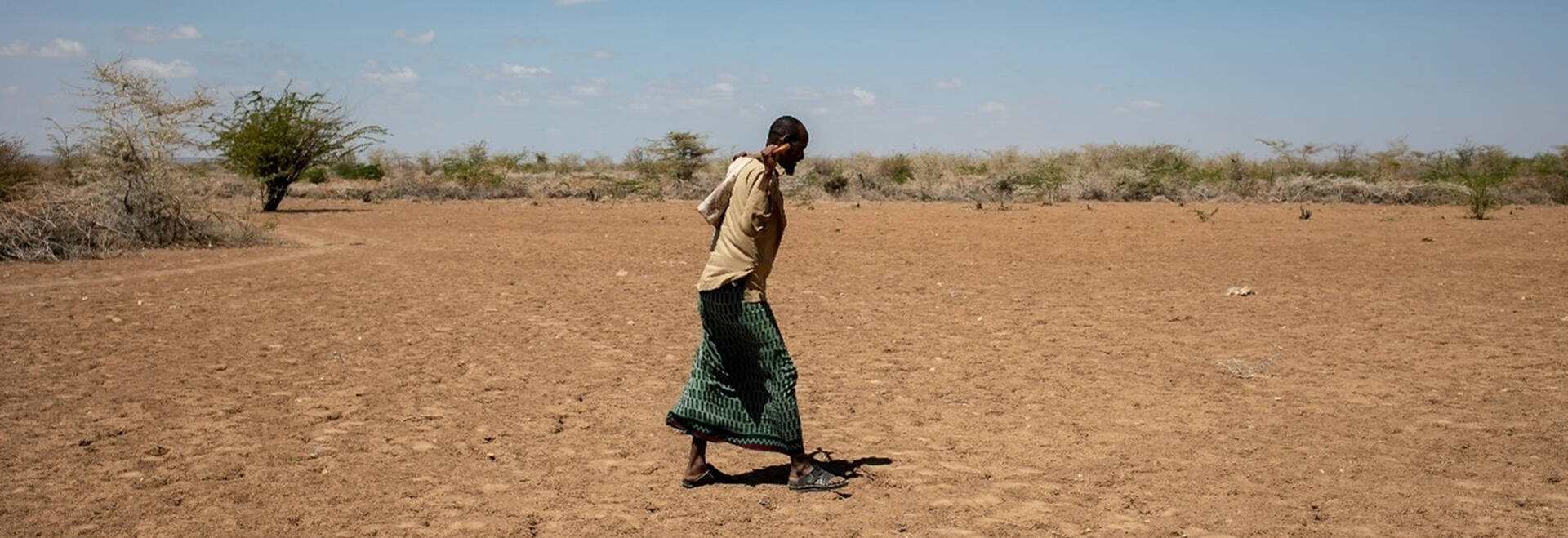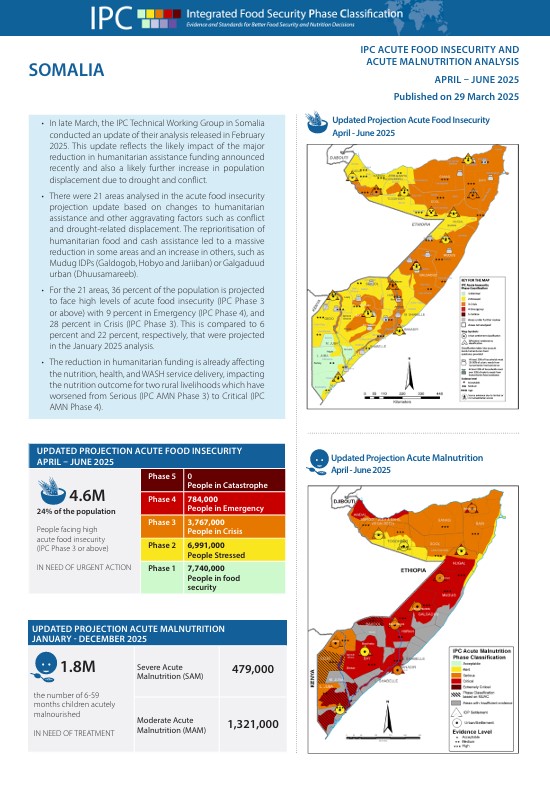
- © FAO
SOMALIA: Updated projection shows 4.6 million people likely to face high levels of acute food insecurity, 1.8 million children likely to suffer acute malnutrition
Overview
In late March, the IPC Technical Working Group in Somalia conducted an update of their analysis released in February 2025. This update reflects the likely impact of the major reduction in humanitarian assistance funding announced recently and also a likely further increase in population displacement due to drought and conflict.
There were 21 areas analysed in the acute food insecurity projection update based on changes to humanitarian assistance and other aggravating factors such as conflict and drought-related displacement. The reprioritisation of humanitarian food and cash assistance led to a massive reduction in some areas and an increase in others, such as Mudug IDPs (Galdogob, Hobyo and Jariiban) or Galgaduud urban (Dhuusamareeb).
For the 21 areas, 36 percent of the population is projected to face high levels of acute food insecurity (IPC Phase 3 or above) with 9 percent in Emergency (IPC Phase 4), and 28 percent in Crisis (IPC Phase 3). This is compared to 6 percent and 22 percent, respectively, that were projected in the January 2025 analysis.
The revised number of people in IPC Phase 3 or above between April and June 2025 is 713,000 people compared to 553,000 people estimated in the January 2025 analysis, or a net increase of nearly 160,000 people (29 percent).
With regards to acute malnutrition, the reduction in humanitarian funding is already affecting the nutrition, health, and WASH service delivery, impacting the nutrition outcome for two rural livelihoods which have worsened from Serious (IPC AMN Phase 3) to Critical (IPC AMN Phase 4).
The total acute malnutrition burden estimate for January to December 2025 has also increased to 1.8 million children aged 6-59 months, including 479,000 children likely to be severely malnourished. Compared to the January 2025 analysis, with a total burden estimate of 1.7 million for the same period, the revised estimate reflects an increase of nearly 47,000 children facing acute malnutrition.
The January 2025 analysis showed that acute malnutrition situation was expected to deteriorate between April and June 2025 in these livelihood zones, primarily due to seasonal variations and persistent vulnerabilities following the worsening of conditions observed during the 2024 Deyr. However, after accounting for the cumulative effects of the funding reduction, acute malnutrition situation is projected to deteriorate even further threatening the lives of children.
Download the report
Join our mailing list

